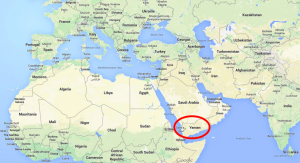Are we really as divided as we think? How dark forces are attempting to alienate us from our neighbours
May 11, 2023Originally published in The Toronto Star on April 25, 2023 as contributing columnist
“I’m not bad. I’m just drawn that way.” — Jessica Rabbit, “Who Framed Roger Rabbit”
How much of human behaviour is subconscious, seemingly illogical or counter intuitive? The answer is, a lot!
My daughter, who is studying cognitive neuroscience at university, has been regaling me lately with facts about how the human brain actually works. Neuroscience is the field concerned with the study of the biological processes and aspects that underlie cognition, with a specific focus on the neural connections in the brain that are involved in mental processes. Think of the science of psychology as describing how a spark plug works within your car engine and neuroscience describing the inner workings of a spark plug.
My curiosity about this topic spurred me to reach out to my old friend Tim Philips, who years ago launched an initiative to study the “neuroscience of conflict.” That is, exploring how lessons learned from intractable global conflicts seen through the lens of neuroscience could be harnessed for peace.
When he first mentioned this idea to me many years ago, I admit I didn’t pay much attention. Even though I was involved in conflict prevention (I am currently the co-chair of the International Crisis Group), his ideas at the time seemed beyond my more practical sensibilities. I am now rethinking my perspective.
Tim founded the non-profit organization Beyond Conflict, a democracy and reconciliation initiative, over 30 years ago. Since then, the organization has worked in 75 countries struggling with conflict by researching, testing and scaling innovative solutions that help communities to mitigate, resolve and recover from conflict, promote reconciliation and thereby promote peace.
A few years ago, Tim introduced neuroscience to the tool box of methods we can use to better understand how humans think and behave toward one another under certain conditions. Our brains have evolved over tens of thousands of years and have maintained a key function, which is to be efficient and ensure survival.
Interestingly, the brain doesn’t care about the impact its focus on survival has on our behaviour other than what protects us and our kin. Most of the functions the brain monitors and regulates — breathing, heart rate, administering hormones, etc. — are done without us even being aware.
The same can be said about the brain’s reaction to dangers of every type. We are all aware of “fight or flight” reactions to circumstances that involve an immediate, short-term threat, such as running into a stranger in a dark alley. But our more recent understanding of cognitive neuroscience gives us insight into a different part of the brain that triggers fear or disgust, the latter of which can have a much more damaging impact on others around us. When something disgusts us, we feel the need to eradicate the problem. Think of discovering rats in your kitchen cupboards.
Similarly, when we see others we believe to threaten our way of life or undermine the status or power of the group we associate ourselves with — our tribe — we also go into a form of survival mode. When we are encouraged to be disgusted with a certain group, we tend to dehumanize them, strip them of their human qualities. Doing so makes it easier to eradicate them. In extreme circumstances, such as Nazi Germany or Rwanda in the 1990s, stripping away others’ human qualities essentially gives us a licence to kill. But what if our brains are manipulated to see others in this destructive way?
We are all painfully aware that America is as divided as it has ever been, with the notable exception of the Civil War years. But what we may not be aware of, regardless of which side of the divide we are on, is that our individual perceptions about how the others feel about us may be way off.
The fact is that this us versus them rhetoric and point of view is more toxic than the actual opinions and values of the opposing sides. This was found in Beyond Conflict’s recent study, “America’s Divided Mind.” What it found was both stunning and counterintuitive — that polarization was fuelling dehumanizing conflict, rather than the other way around. “Americans incorrectly believe that members of the other party dehumanize, dislike, and disagree with them about twice as much as they actually do. In short, we believe we’re more polarized than we really are — and that misperception can drive us even further apart.”
The study revealed that the U.S. is not as divided as we would like to believe. In fact, Americans are closer to one another than anyone thinks. Unsurprisingly, leaders on both sides tend to exaggerate the disagreement on critical issues, with disastrous effect on our social fabric. “It is clear that untruths about the intentions and beliefs of political parties may be undermining our democracy,” the authors wrote. Thrown into the mix is a polarized media environment that generates fear and magnifies it in echo chambers. It’s no wonder that the toxicity in our discourse is approaching dangerous levels.
There exists no easy fix to this issue. Media can exploit this to control the narrative, and money and power control the media. This truth was made clear in the recent Dominion Voting versus Fox News lawsuit. Text messages revealed that senior personnel at Fox were worried about their falling share price as they were debating how much “fact-checking” they would conduct over stolen-election lies.
It is no secret that fuelling polarization may be in the interests of media outlets like Fox News in order to generate profits and it may be in the interests of some politicians in order to gain power. However, this is a clear and present danger to the social fabric of a functioning society. We must make a collective decision to guard against this tendency and ensure that our voices are derived from critical thinking and not as a mere survival instinct.










